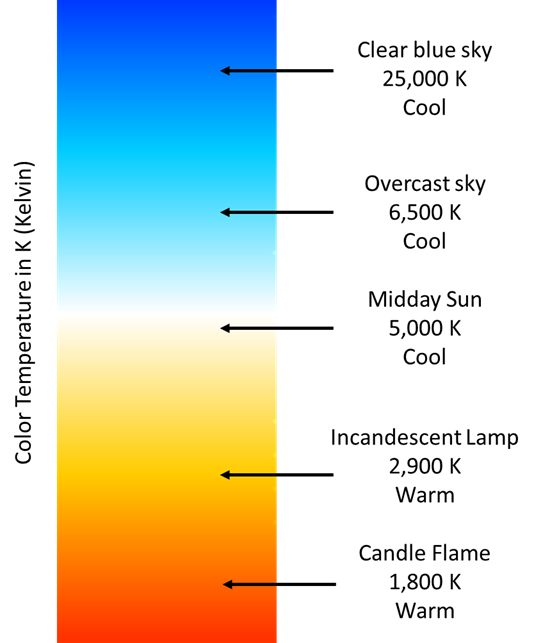4 Chromaticity – Colour Temperature
Aaron Lee
Most artificial light sources are a source of white light. One of the ratings we use to describe the Quality of that light is Chromaticity, or Colour Temperature. While it is expressed in Kelvin (K), it is not a measurement of how hot the lamp gets. Instead, it is a measurement of light quality and is used to define the colour appearance of a light source and describes the ratio of red and orange wavelengths vs blue and violet wavelengths.

Lamps with a high colour temperature (4,000 K and up) will cause objects to have a slightly blueish appearance. Psychologically we associate this with “cooler” colours and so we would describe this as a cool-white light source. An extremely blue sky would be considered a very cool-white light source. Lamps with a higher colour temperature are often utilized in installations with higher lighting levels such as commercial and institutional settings.
Lamps with a lower colour temperature (3,000 K and below) will cause objects to have a slightly redder appearance which we perceive as a “warm” colour. Imagine the colour of a roaring fireplace and some candles and you can see why we psychologically associate this colour temperature with “warmth”.
Warm colours are generally more acceptable at low lighting levels, and cool colours at higher lighting levels. Lamps with a chromaticity between 3,000 K and 4,000 K are undefined and generally considered neither warm, nor cool colours, and are acceptable in most general lighting situations.
